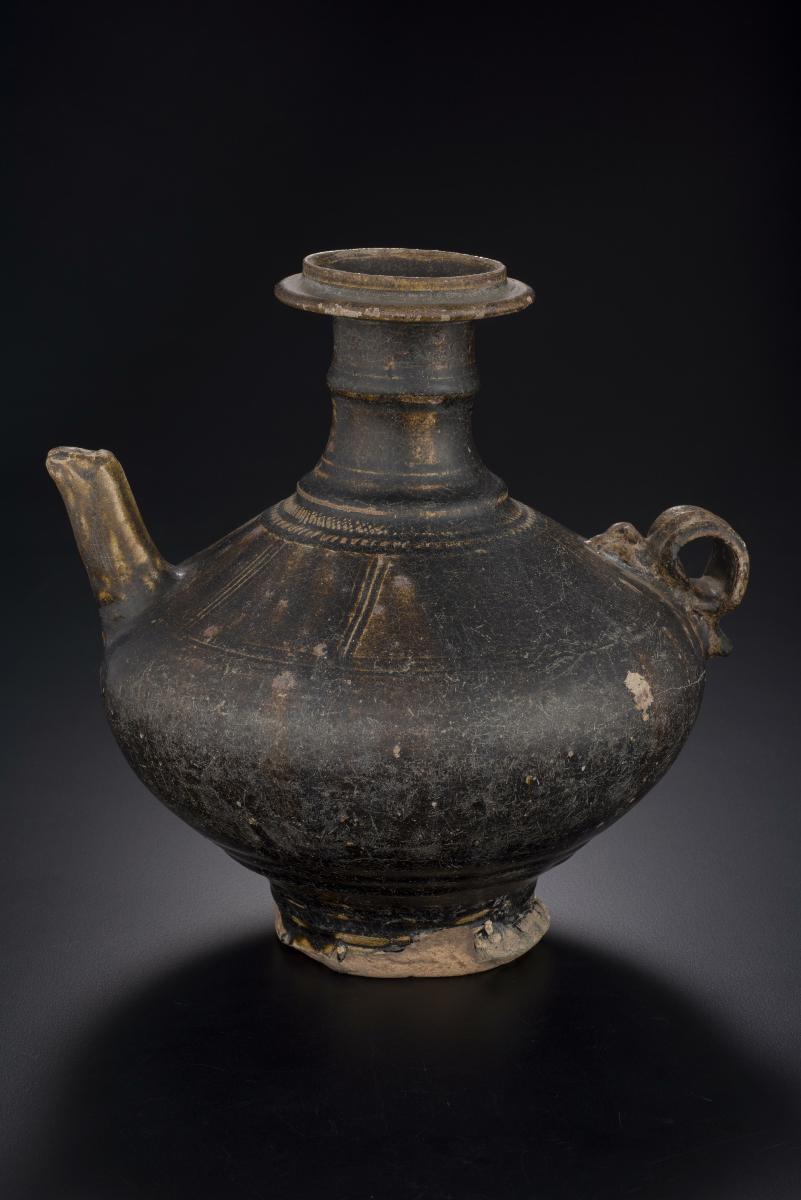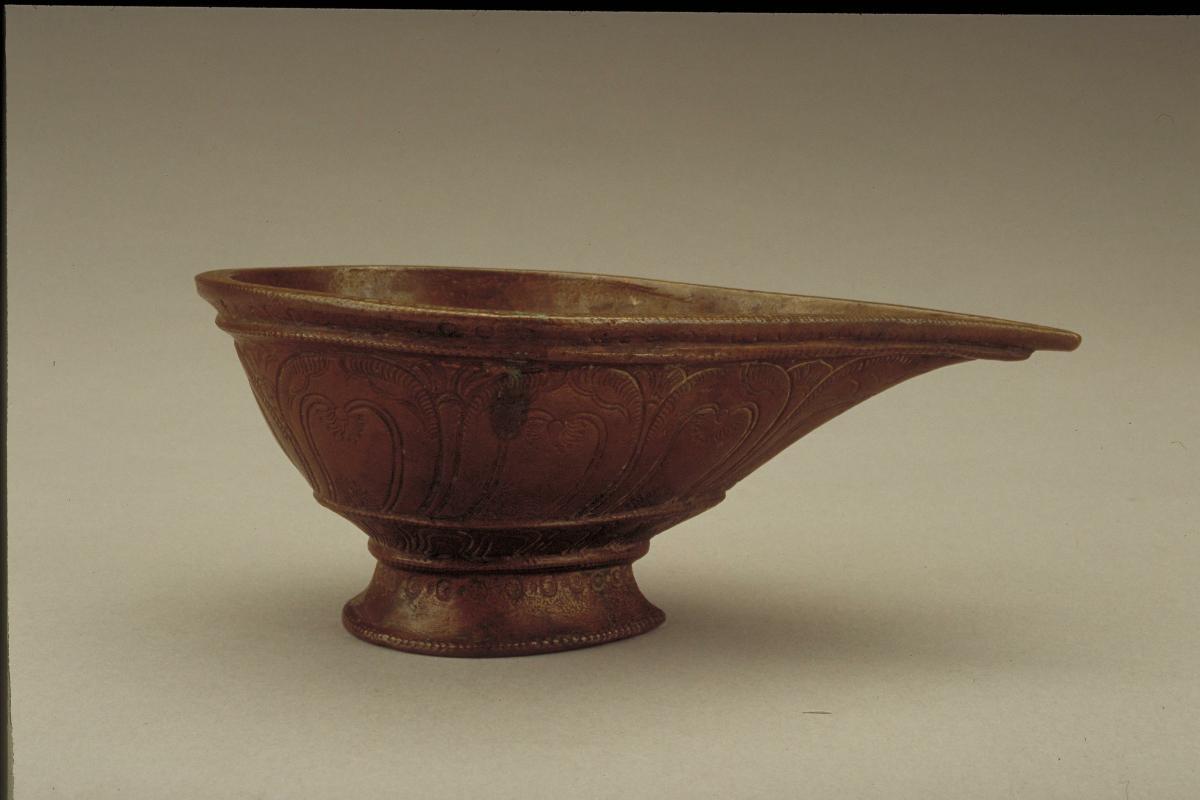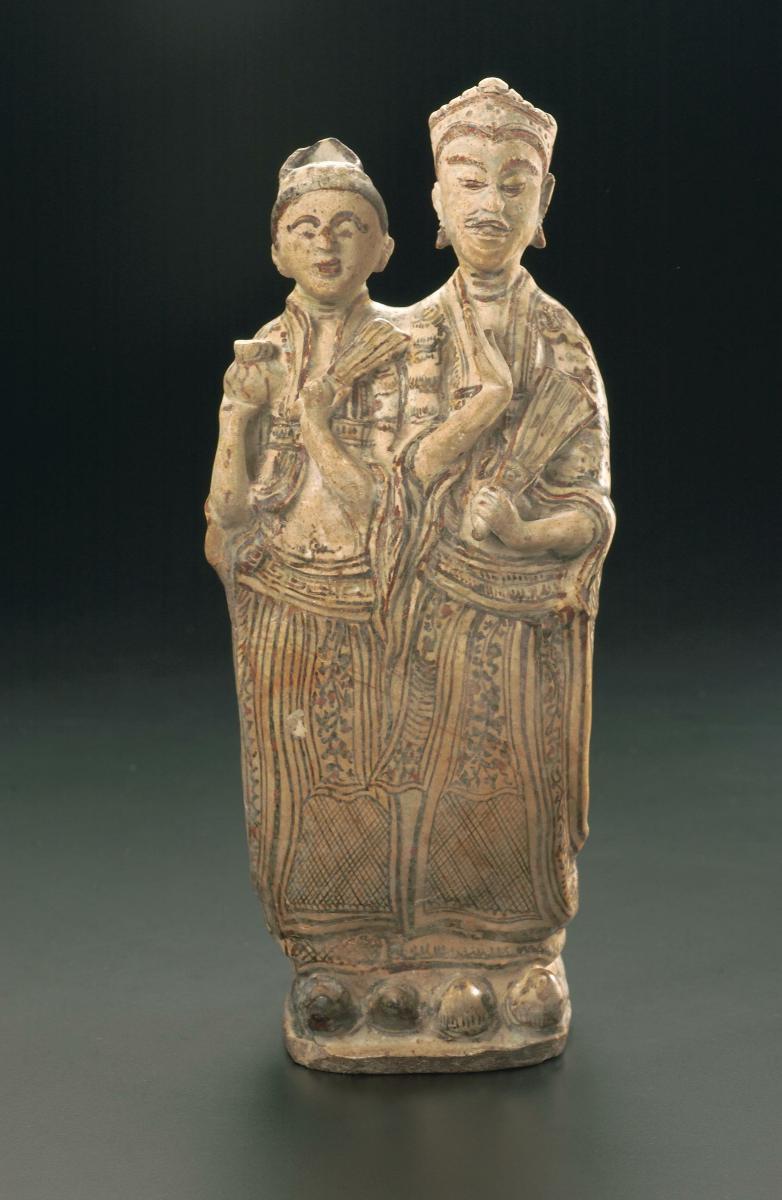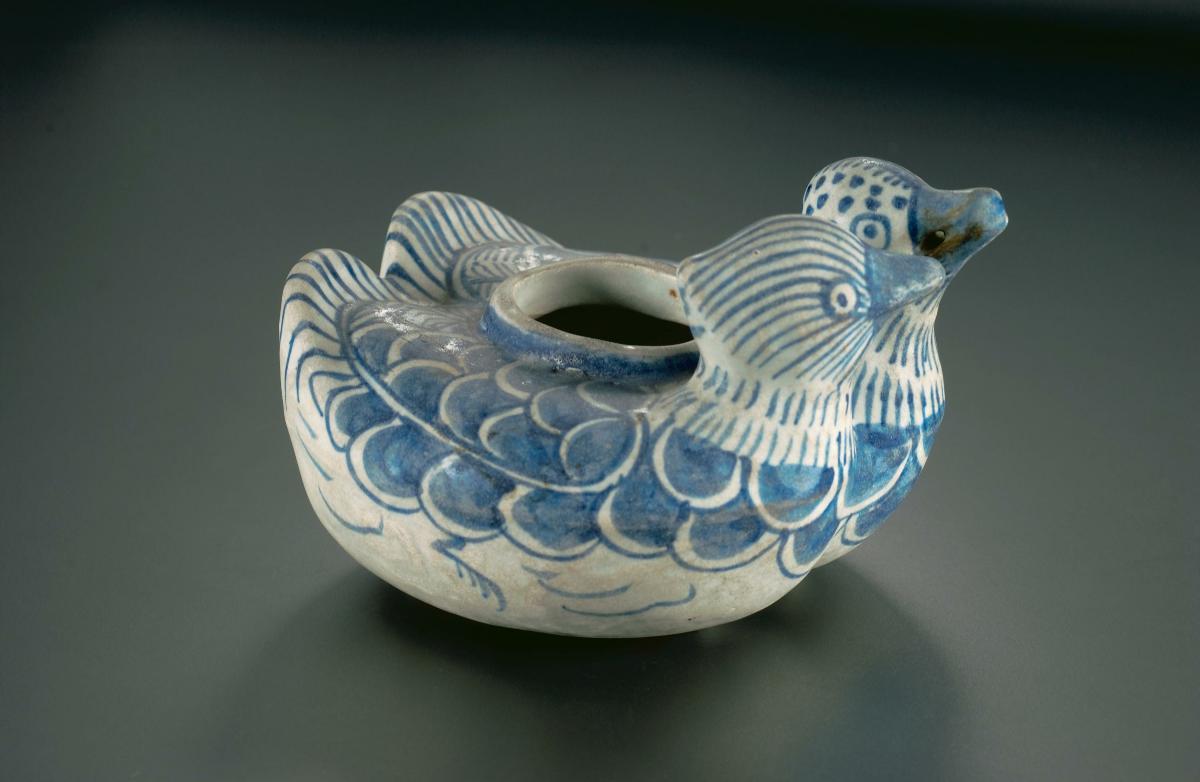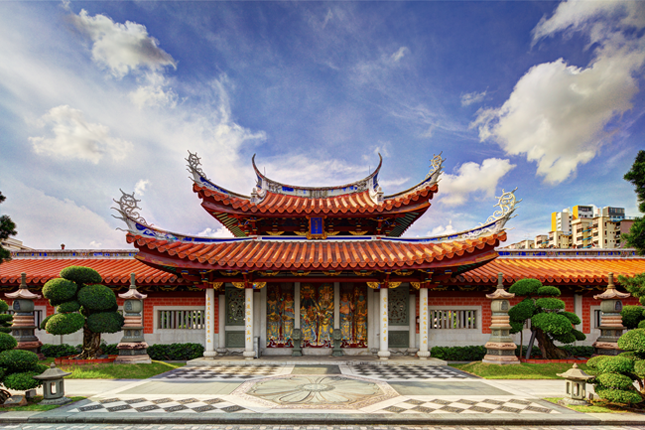x Body: Dia20.5,
x Mouth: Dia12.3 cm
This pouring vessel is typical of Khmer kendi with a thin brown glaze and carved bands around the mouth, shoulder and foot. The vessel has a wide flanged mouth, tubular neck, ovoid body and short spout. The glaze is streaky and stops irregularly at the foot. The sealed mouth is unusual and may have been an accidental firing defect.The form was probably inspired by metal prototypes. Kendi is a Malay term derived from the Sanskrit word ‘kundika’, a small ritual pouring vessel. A typical kendi has a bulbous body, a neck which is used for holding the vessel and a spout. The tradition of using kendi in Hindu-Buddhist rituals suggests that this type of vessel originated from India. Kendi have been used in Southeast Asia for at least a thousand years, as indicated by depictions on temple wall reliefs dating back to 9th century CE. They include locally made earthenware kendi as well as glazed wares from China, Japan, Thailand and Vietnam. These were part of the lively international trade in ceramics and other commodities that resulted in stylistic exchanges. Kendi were used for a wide range of purposes in addition to their primary function as a pouring and drinking container. In Southeast Asia, kendi were important as ritual pouring vessels used in weddings and other ceremonies. Miniature kendi were likely to have been medicine containers or toys. The West Asian tradition of tobacco smoking using water-pipes was also practiced in this region and kendi were adapted for this purpose.Khmer ceramics have a variety of distinctive forms. However, only two types of glazes were used. One was thin, pale green, usually translucent and finely crazed while the other varied from chestnut brown to olive-green and black and always mottled. Sometimes these two glazes were used on one piece.Excavations show that brown glazed wares were produced by the late tenth century. Khmer ceramics are noted for their simplicity in design. Decoration was used in moderation thus allowing for the beauty of the forms to stand out.





